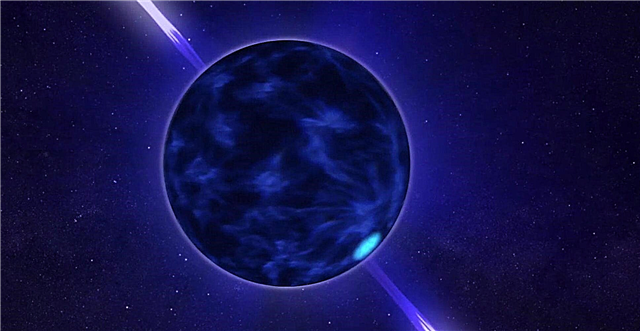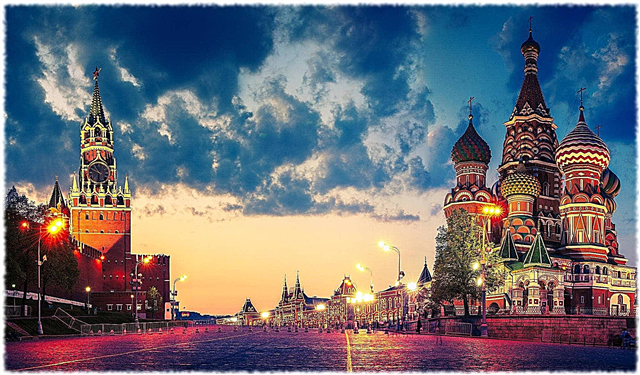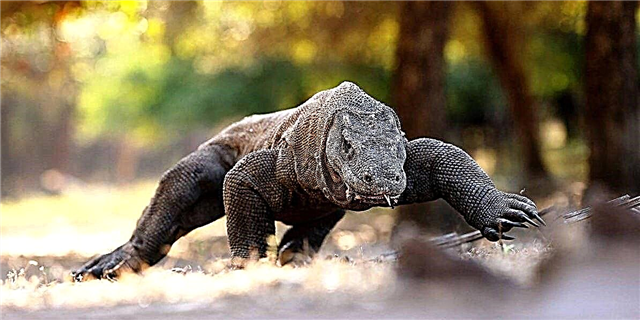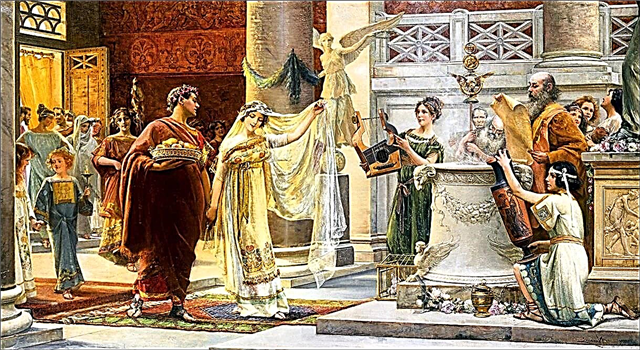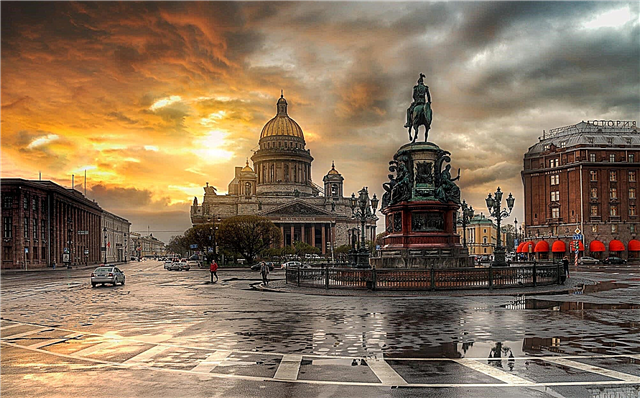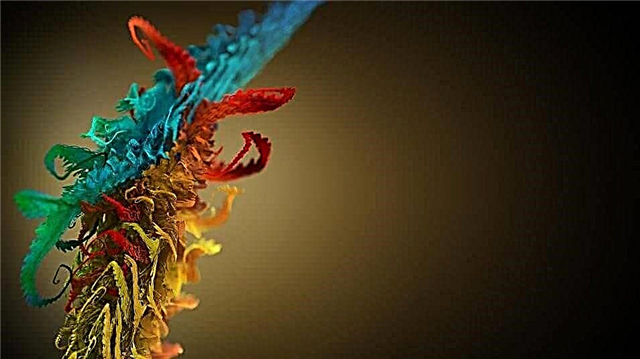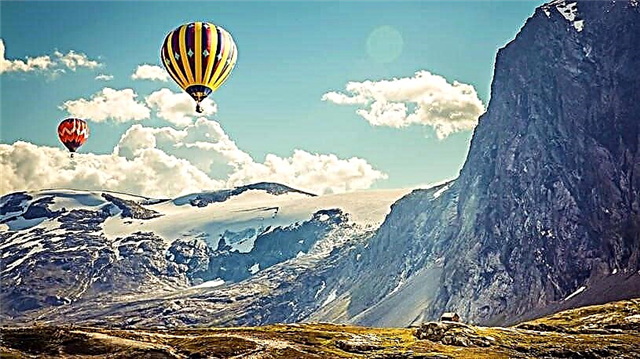
Forests are considered the "green lungs of the planet" not in vain. What is photosynthesis and how this process occurs, we will consider in detail.
What is photosynthesis?
Photosynthesis - A biochemical process during which organic ones arise using special plant pigments and light energy from inorganic substances (carbon dioxide, water). This is one of the most important processes due to which the majority of organisms appeared and continues to exist on the planet.

Interesting fact: Terrestrial plants, as well as green algae, are capable of photosynthesis. In this case, algae (phytoplankton) produce 80% oxygen.
The Importance of Photosynthesis for Life on Earth
Without photosynthesis, instead of many living organisms, only bacteria would exist on our planet. It is the energy obtained as a result of this chemical process that allowed bacteria to evolve.
Any natural processes need energy. She comes from the sun. But sunlight only takes shape after being transformed by plants.
Plants use only part of the energy, and the rest they accumulate in themselves. They eat herbivores, which are food for predators. In the course of the chain, each link receives the necessary valuable substances and energy.

Oxygen produced during the reaction is necessary for all creatures to breathe. Breathing is the opposite of photosynthesis. In this case, organic matter is oxidized, destroyed. The resulting energy is used by organisms to perform various vital tasks.
During the planet’s existence, when there were few plants, oxygen was practically absent. Primitive life forms received a minimum of energy in other ways. It was too little for development. Therefore, breathing due to oxygen has opened up more opportunities.
Another function of photosynthesis is the protection of organisms from exposure to ultraviolet light. We are talking about the ozone layer located in the stratosphere at an altitude of about 20-25 km. It is formed due to oxygen, which turns into ozone under the action of sunlight. Without this protection, life on Earth would be limited only to underwater organisms.

Organisms release carbon dioxide during respiration. It is an essential element of photosynthesis. Otherwise, carbon dioxide would simply accumulate in the upper atmosphere, greatly enhancing the greenhouse effect.
This is a serious environmental problem, the essence of which is to increase the temperature of the atmosphere with negative consequences. These include climate change (global warming), melting glaciers, rising sea levels, etc.
Photosynthesis Functions:
- oxygen evolution;
- energy formation;
- nutrient formation;
- the creation of the ozone layer.
Definition and formula of photosynthesis
The term “photosynthesis” comes from a combination of two words: photo and synthesis. Translated from ancient Greek, they mean "light" and "connection", respectively. Thus, the energy of light is converted into the energy of bonds of organic substances.

Scheme:
Carbon dioxide + water + light = carbohydrate + oxygen.
The scientific formula for photosynthesis:
6CO2 + 6H2O → C6N12ABOUT6 + 6O2.
Photosynthesis occurs so that direct contact of water and CO2 not visible.
The importance of photosynthesis for plants
Plants require organic matter, energy for growth and development. Thanks to photosynthesis, they provide themselves with these components. The creation of organic substances is the main goal of photosynthesis for plants, and the release of oxygen is considered a side reaction.

Interesting fact: Plants are unique because they don’t need other organisms to get energy.Therefore, they form a separate group - autotrophs (translated from the ancient Greek language “I eat myself”).
How does photosynthesis occur?
Photosynthesis takes place directly in the green parts of plants - chloroplasts. They are part of plant cells. Chloroplasts contain a substance - chlorophyll. This is the main photosynthetic pigment, thanks to it the whole reaction occurs. In addition, chlorophyll determines the green color of vegetation.

This pigment is characterized by the ability to absorb light. And in the cells of the plant, a real biochemical “laboratory” is launched, in which water and CO2 turn into oxygen, carbohydrates.
Water enters through the root system of the plant, and gas penetrates directly into the leaves. Light acts as an energy source. When a light particle acts on a chlorophyll molecule, its activation occurs. In the water molecule H2O oxygen (O) remains unclaimed. Thus, it becomes a by-product for plants, but so important for us, a reaction product.
Photosynthesis Phases
Photosynthesis is divided into two stages: light and dark. They occur simultaneously, but in different parts of the chloroplast. The name of each phase speaks for itself. The light or light-dependent phase occurs only with the participation of light particles. In the dark or non-volatile phase, light is not required.
Before examining each phase in more detail, it is worth understanding the structure of the chloroplast, since it determines the essence and place of the stages. Chloroplast is a variety of plastids and is located inside the cell separately from its other components. It has the shape of a seed.

Chloroplast constituents involved in photosynthesis:
- 2 membranes;
- stroma (internal fluid);
- thylakoids;
- lumens (gaps inside thylakoids).
Light phase of photosynthesis
It flows on thylakoids, more precisely, their membranes. When light hits them, negatively charged electrons are released and accumulated. Thus, photosynthetic pigments lose all electrons, after which it is the turn of water molecules to decay:
H2O → H + + OH-
In this case, the formed hydrogen protons have a positive charge and accumulate on the inner thylakoid membrane. As a result, protons with a charge plus and electrons with a charge minus are separated only by a membrane.
Oxygen is produced as a by-product:
4OH → O2 + 2H2O
At a certain moment, the phases of electrons and protons of hydrogen become too many. Then the enzyme ATP synthase enters the work. Its task is to transfer hydrogen protons from the thylakoid membrane to the chloroplast liquid medium — the stroma.

At this stage, hydrogen is placed at the disposal of another carrier - NADP (short for nicotinamidine nucleotide phosphate). It is also a type of enzyme that accelerates oxidative reactions in cells. In this case, his job is to transport hydrogen protons in a carbohydrate reaction.
At this stage, the process of photophospholation occurs, during which a huge amount of energy is generated. Its source is ATP - adenosine triphosphoric acid.
Brief outline:
- The hit of a quantum of light on chlorophyll.
- The selection of electrons.
- The evolution of oxygen.
- The formation of NADPH oxidase.
- ATP energy production.
Interesting fact: There is a relict plant called Velvichia growing on the African coast of the Atlantic Ocean. This is the only representative of a kind with a minimum of leaves capable of photosynthesis. However, the age of the Velvich reaches about 2000 years.

The dark phase of photosynthesis
The light-independent phase occurs directly in the stroma. It represents a series of enzymatic reactions. Carbon dioxide absorbed at the light stage dissolved in water, and at this stage it is reduced to glucose. Complex organic substances are also produced.
The reactions of the dark phase are divided into three main types and depend on the type of plants (more precisely, their metabolism), in the cells of which photosynthesis occurs:
- WITH3-plants;
- WITH4-plants;
- CAM plants.

K C3- Plants include most of the agricultural crops that grow in temperate climates. During photosynthesis, carbon dioxide becomes phosphoglyceric acid.
Subtropical and tropical species, mainly weeds, belong to C4 plants. They are characterized by the transformation of carbon dioxide into oxaloacetate. CAM plants are a category of plants that lack moisture. They differ in a special type of photosynthesis - CAM.
WITH3-photosynthesis
The most common is C3-photosynthesis, which is also called the Calvin cycle - in honor of the American scientist Melvin Calvin, who made a huge contribution to the study of these reactions and received the Nobel Prize for this.
Plants are called C3 due to the fact that during the reactions of the dark phase 3-carbon molecules of 3-phosphoglyceric acid - 3-PGA are formed. Various enzymes are directly involved.

For a complete glucose molecule to form, 6 cycles of reactions of the light-independent phase must pass. Carbohydrate is the main product of photosynthesis in the Calvin cycle, but in addition to it, fatty and amino acids, as well as glycolipids, are produced. C3 plant photosynthesis takes place exclusively in mesophyll cells.
The main disadvantage of C3photosynthesis
Group C plants3are characterized by one significant drawback. If there is insufficient moisture in the environment, the ability to photosynthesis is significantly reduced. This is due to photorespiration.
The fact is that with a low concentration of carbon dioxide in chloroplasts (less than 50: 1 000 000), oxygen is fixed instead of carbon fixation. Special enzymes slow down significantly and waste solar energy.
At the same time, the growth and development of the plant slows down, since it lacks organic matter. Also, there is no release of oxygen into the atmosphere.
Interesting fact: Elysia chlorotica sea slug is a unique animal that photosynthesizes like plants. It feeds on algae, the chloroplasts of which penetrate the cells of the digestive tract and photosynthesize there for months. The carbohydrates produced serve the slug as food.

C4 photosynthesis
Unlike C3-synthesis, here the reactions of carbon dioxide fixation are carried out in various plant cells. These types of plants are able to cope with the problem of photorespiration, and they do this with a two-stage cycle.
On the one hand, a high level of carbon dioxide is maintained, and on the other, a low level of oxygen in chloroplasts is controlled. This tactic allows C4 plants to avoid photo-breathing and the associated difficulties. Representatives of plants of this group are sugarcane, corn, millet, etc.
Compared to plants C3 they are able to perform photosynthesis processes much more intensively under the condition of high temperature and lack of moisture. At the first stage, carbon dioxide is fixed in the mesophyll cells, where 4-carbonic acid is formed. Then the acid passes into the shell and decomposes there into a 3-carbon compound and carbon dioxide.

In the second stage, the resulting carbon dioxide begins to work in the Calvin cycle, where glyceraldehyde-3-phosphate and carbohydrates are produced, which are necessary for energy metabolism.
Due to the two-step photosynthesis in C4 plants, a sufficient amount of carbon dioxide is formed for the Kelvin cycle. Therefore, enzymes work in full force and do not waste energy in vain.
But this system has its drawbacks. In particular, a larger amount of ATP energy is consumed - it is necessary for the transformation of 4-carbon acids into 3-carbon acids and in the opposite direction. So C3-Photosynthesis is always more productive than C4 with the proper amount of water and light.
What affects the rate of photosynthesis?
Photosynthesis can occur at different speeds. This process depends on environmental conditions:
- water;
- wavelength of light;
- carbon dioxide;
- temperature.

Water is a fundamental factor, so when it is lacking, reactions slow down. For photosynthesis, the most favorable are the waves of the red and blue-violet spectrum. A high degree of illumination is also preferable, but only to a certain value - when it is reached, the connection between the illumination and the reaction rate disappears.
A high concentration of carbon dioxide provides fast photosynthetic processes and vice versa. Certain temperatures are important for enzymes that accelerate reactions. Ideal conditions for them are about 25-30 ℃.
Photo breath
All living things need breathing, and plants are no exception. However, this process in them occurs slightly differently than in humans and animals, which is why it is called photorespiration.
Generally, breath - a physical process during which a living organism and its environment exchange gases. Like all living things, plants need oxygen to breathe. But they consume it much less than they produce.
During photosynthesis, which occurs only in sunlight, plants create food for themselves. During photo-breathing, which is carried out around the clock, these nutrients are absorbed by them in order to support metabolism within the cells.
Interesting fact: during a sunny day, a 1-hectare forest plot consumes from 120 to 280 kg of carbon dioxide and emits from 180 to 200 kg of oxygen.
Oxygen (like carbon dioxide) penetrates plant cells through special openings - stomata. They are located at the bottom of the leaves. About 1000 stomata can be located on one sheet.

Gas exchange of plants depending on illumination
The gas exchange process at different illumination is presented as follows:
- Bright light. Carbon dioxide is used during photosynthesis. Plants produce more oxygen than they consume. Its surpluses enter the atmosphere. Carbon dioxide is consumed faster than is released by respiration. Unused carbohydrates are stored by the plant for future use.
- Low light. Gas exchange with the environment does not occur, since the plant consumes all the oxygen that it produces.
- Lack of light. Only respiration processes occur. Carbon dioxide is released and oxygen is consumed.

Chemosynthesis
Some living organisms are also capable of forming monocarbohydrates from water and carbon dioxide, while they do not need sunlight. These include bacteria, and the process of energy conversion is called chemosynthesis.
Chemosynthesis It is a process during which glucose is synthesized, but chemicals are used instead of solar energy. It flows in areas with a sufficiently high temperature, suitable for the operation of enzymes, and in the absence of light. These may be areas near hydrothermal springs, methane leaks at sea depths, etc.

The history of the discovery of photosynthesis
The history of the discovery and study of photosynthesis dates back to 1600, when Jan Baptiste van Helmont decided to understand the current question at that time: what do plants eat and where do they get useful substances from?
At that time, it was believed that the soil was a source of valuable elements. The scientist placed a willow twig in a container with earth, but previously measured their weight. For 5 years, he took care of the tree, watering it, after which he again carried out measuring procedures.
It turned out that the weight of the earth decreased by 56 g, but the tree became 30 times heavier. This discovery disproved the view that plants feed on soil and gave rise to a new theory - water nutrition.

In the future, many scientists tried to refute it.For example, Lomonosov believed that partially structural components enter plants through leaves. He was guided by plants that successfully grow in arid areas. However, it was not possible to prove this version.
The closest thing to the real situation was Joseph Priestley, a chemical scientist and part-time priest. Once he discovered a dead mouse in an upside down jar, and this incident forced him to conduct a series of experiments with rodents, candles, and containers in the 1770s.
Priestley found that the candle always goes out quickly if you cover it with a jar on top. Also, a living organism cannot survive. The scientist came to the conclusion that there are certain forces that make air suitable for life, and tried to connect this phenomenon with plants.
He continued to set up experiments, but this time he tried to place a pot with growing mint under a glass container. To the great surprise, the plant continued to actively develop. Then Priestley placed a plant and a mouse under one jar, and only an animal under the second. The result is obvious - under the first tank, the rodent remained unharmed.

The achievement of the chemist became the motivation for other scientists around the world to repeat the experiment. But the catch was that the priest conducted experiments in the daytime. And, for example, pharmacist Karl Scheele - at night, when there was free time. As a result, the scientist accused Priestley of deceit, because his experimental subjects could not stand the experiment with the plant.
A real scientific confrontation erupted between chemists, which brought significant benefits and made it possible to make another discovery - that plants need to restore air, they need sunlight.
Of course, then no one called this phenomenon photosynthesis, and there were still many questions. However, in 1782, the botanist Jean Senebier was able to prove that in the presence of sunlight, plants are able to break down carbon dioxide at the cellular level. And in 1864, finally, experimental evidence appeared that plants absorb carbon dioxide and produce oxygen. This is the merit of the scientist from Germany - Julius Sachs.

